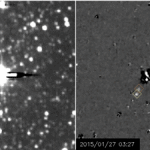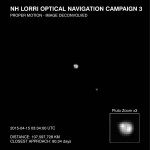NASA Baffled by Pluto Suddenly Emitting X-Ray Beams VIDEO

NASA has detected Pluto suddenly emitting x-ray beams despite its lack of gasses in its thin atmosphere.
Pluto is a dwarf planet in the Kuiper belt, a ring of bodies beyond Neptune. It was the first Kuiper belt object to be discovered. It is the largest and second-most-massive known dwarf planet in the Solar System and the ninth-largest and tenth-most-massive known object directly orbiting the Sun. It is the largest known trans-Neptunian object by volume but is less massive than Eris, a dwarf planet in the scattered disc. Like other Kuiper belt objects, Pluto is primarily made of ice and rock and is relatively small—about one-sixth the mass of the Moon and one-third its volume.
It has a moderately eccentric and inclined orbit during which it ranges from 30 to 49 astronomical units or AU (4.4–7.4 billion km) from the Sun. This means that Pluto periodically comes closer to the Sun than Neptune, but a stable orbital resonance with Neptune prevents them from colliding. Light from the Sun takes about 5.5 hours to reach Pluto at its average distance (39.5 AU).
On July 14, 2015, the New Horizons spacecraft became the first spacecraft to fly by Pluto. During its brief flyby, New Horizons made detailed measurements and observations of Pluto and its moons.On October 25, 2016, at 05:48 pm ET, the last bit of data (of a total of 50 billion bits of data; or 6.25 gigabytes) was received from New Horizons from its close encounter with Pluto on July 14, 2015.
Watch the Video:







